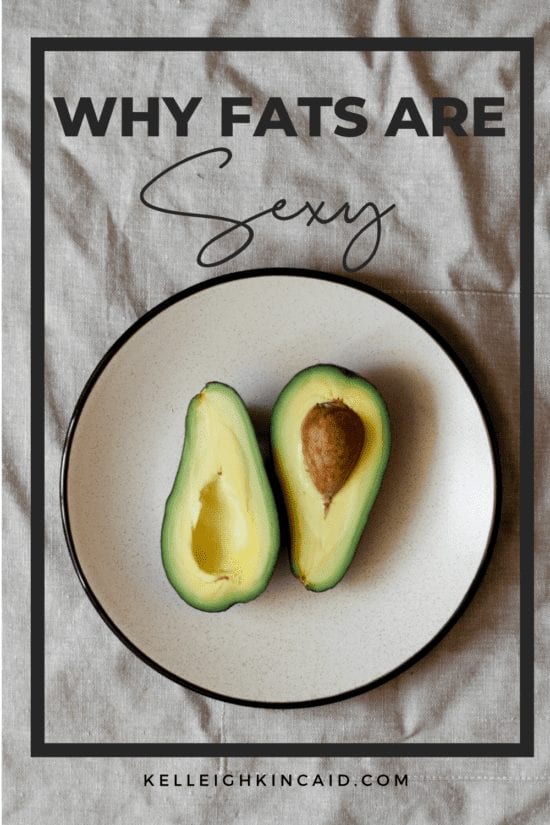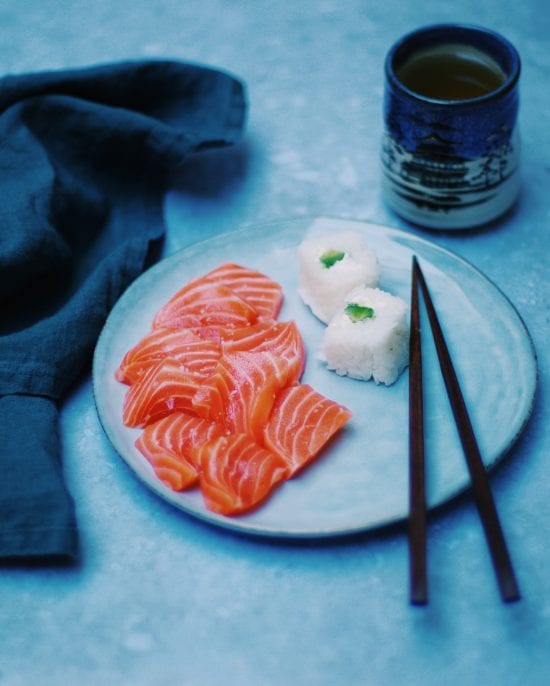Why Fats Are Sexy (Literally)
Fats are sexy, literally. Fats keep you full longer, stabilize your blood sugar, and help you lose weight. Sex hormones are made from cholesterol, found in animal fats. And they just taste damn good.
But just not any fat will do.
Read on for the scoop...

I am totally guilty of following a low fat diet in my 20’s. I would use a few pumps from my “I cant believe its not butter’ spray bottle on my skinless, boneless chicken breast and call it good.
Gah. So sad. Because foods tastes pretty bland without fat, I would have intense cravings and never feel satisfied with a meal.
I’ve never been heavier, and more sad than when I was eating a low fat diet.
Fats are not only important for energy and metabolism, but also for hormone creation, as is cholesterol – both found in sources of animal fat.
It is critical for good health to get a healthy balance of fats in your diet. I am not keto (more on that later) but I do use fats liberally, love saturated fats for cooking, and generally eat as much fat as my heart desires.
“I have never been heavier and more sad than when I was eating a low fat diet.”
Fats are your friends. Fat won’t make you fat or cause heart disease. However, we need to pay close attention to the types of fat we are eating. We need a healthy mix of fats in the diet.
WHY YOU NEED FATS
- Fats provide a long burning source of energy and help regulate energy by slowing the absorption of food.
- Fats increase satiety, reducing food cravings.
- Fats act as building blocks for cell membranes and hormones.
- We need fats to absorb fat soluble vitamins.
- They enhance the immune system.
- Fat makes food taste good.
- Saturated fat is the preferred fuel for the heart.
- Short chain and medium chain fatty acids are antimicrobial and protect the GI tract from harmful microorganisms.
FATS 101
Fats are made up of a chain of carbon atoms with varying amounts of hydrogen atoms filling available bonds. The different types of fats (saturated, monounsaturated, polyunsaturated) depend on the length of the carbon chain and the degree to which they are saturated with hydrogen atoms at bonding sites.
The more saturation, the more stable because each carbon atom is paired with two hydrogen atom, not allowing them to become oxidized in the body. The least saturated (polyunsatured) the more reactive because there are unpaired carbon atoms that will react with oxygen.
Most fats are a mix of different fatty acids. Pardon the chemistry talk but this is important to know when talking about balancing fatty acids in your diet.

Saturated Fats
Because each carbon atom is paired with two hydrogen atoms, this fat is extremely stable and not easily oxidized in the body (not prone to react to oxygen), and do not go rancid. They are also the easiest for the body to break apart and use. Since these are very stable, they are excellent for high heat cooking. Remember how your cell membrane is made up of fats? Well about 50% of that is saturated.
Use coconut oil, ghee, and animal fats (like tallow and lard) for cooking at high heat. Include meats with higher fat content and on the bone, which will give you other important minerals.

Polyunsaturated Fats
Two or more of the bonds between carbon and hydrogen are double bonds, therefore lack four or more hydrogen atoms. These are highly oxidative and can produce free radicals when heated. The worst kind of fat you can eat is heated vegetable oils (like foods fried in canola oil or sunflower oil). These are highly toxic, rancid, and create free radicals in the body.
Polyunsaturated fats include omega-3 and omega-6 fatty acids. These are essential fatty acids meaning the body cannot make them and we must get them in our diet. These types of fats are best eaten raw.
This is a major problem with all these almond flour recipes, when you heat the processed almonds the fats oxidize and create free radicals.
Same goes for cooking salmon – you will oxide the health omega 3’s in there if you cook for too long.
Our modern diet is high in omega-6 fatty acids. Our hunter gather ancestors ate about equal parts omega-6and omega-3. Today, we eat about 20:1 omega-6 to omega-3.
We need to focus on reducing omega-6 (found in nuts, seeds, conventionally raised meats and farm raised seafood, and fried foods) and increasing our omega-3’s. Omega-3’s are very anti-inflammatory and can support everything from fighting depression and anxiety, to supporting heart health, and metabolic function.
“The worst kind of fat you can eat is heated vegetable oil (like foods fried in canola oil or sunflower seed oil).”
Toxic Fats
Sadly most Americans are getting their fats from rancid vegetable oils (like canola, soybean, sunflower, and safflower oils). These polyunsaturated fats are extremely delicate and when exposed to heat and light (hello deep fryer, I see you) become unstable.
Hydrogenated fats, highly processed vegetable oils, fried fats.
Tips for balancing your Fatty Acids
- Liberally use saturated fats for cooking
- Avoid fried foods and anything with canola oil in it.
- Use a good Omega-3 blend and add cold water fish to your diet a couple times a week.
- Make your own salad dressings from hemp oil and olive oil.
- Limit the amount of omega-6 in your diet (that means reducing nuts and seeds as well – don’t replace grains with tons of nut butter and flours)

A Word On Conversion
Because the conversion from ALA (alpha lipoic acid), which are plant based omega-3’s to DHA and EPA is inefficient, I recommend people get most of their omega-3’s from fish sources. Choose sustainably harvested fish oil, krill oil, or better yet add 2-3 servings of fatty cold-water fish to your diet each week. Choose from wild caught salmon, cod, sardines (one of my favorites). Skip the tuna and other large fish as the mercury content will be high.
We can be eating enough fats but still be deficient in fatty acids if we don’t have enough bile to properly digest fats. If you are coming off a low fat diet consider cycling in ox bile to meals that contain fats (which should be all of them) to help break down and utilize the fats you are eating.
This is part of the Foundations of Awesome Health Series. Read more here.
